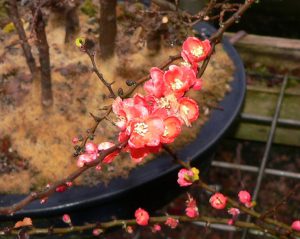Most of the trident maples now have tiny pink buds where new leaves are emerging to show that spring has arrived at Shibui Bonsai.
I’ve repotted most of the deciduous trees that need doing this year so it is time to move on to the evergreens. Some growers now repot pines in autumn but I’m still doing most of mine at the traditional spring repot time.
Today it was time to get a few pines into their first bonsai pots.
This twin trunk Japanese Black Pine has been developing slowly over the past 15 years or so. It has an impressive nebari and some well placed branches and now it is time to start developing better ramification. I think the restricted space in the smaller pot should help control the new growth and help the process.
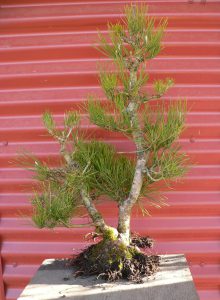
Black pine after root pruning
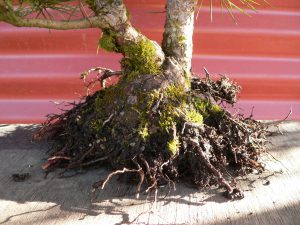
nebari
Among the roots lies a clue to the origins of this tree.
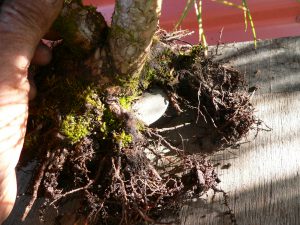
This is one of the pines mentioned in the previous post. Seedlings were threaded through a hole in stainless steel disks to see if pines could be developed in a similar way to the maples as outlined in previous posts. Pines do not root quite as well as maples and only 2 out of 5 survived the process but the experiment did prove that it can be done.
In this case I put 2 seedlings through the same hole. In the process of growing new roots they have fused into a single twin trunk tree.
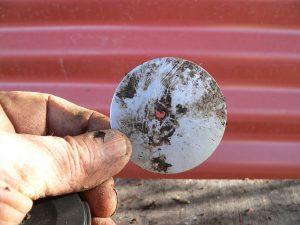
the steel disc
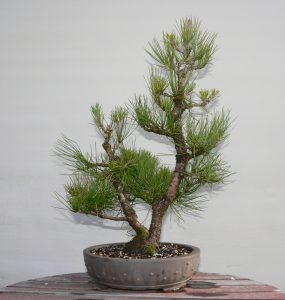
I’ve selected a round drum pot which has adequate size for a developing tree but still a reasonable match to the tree.
Now we wait until December for the first round of candle pruning to start the process of developing branches with full ramification.






